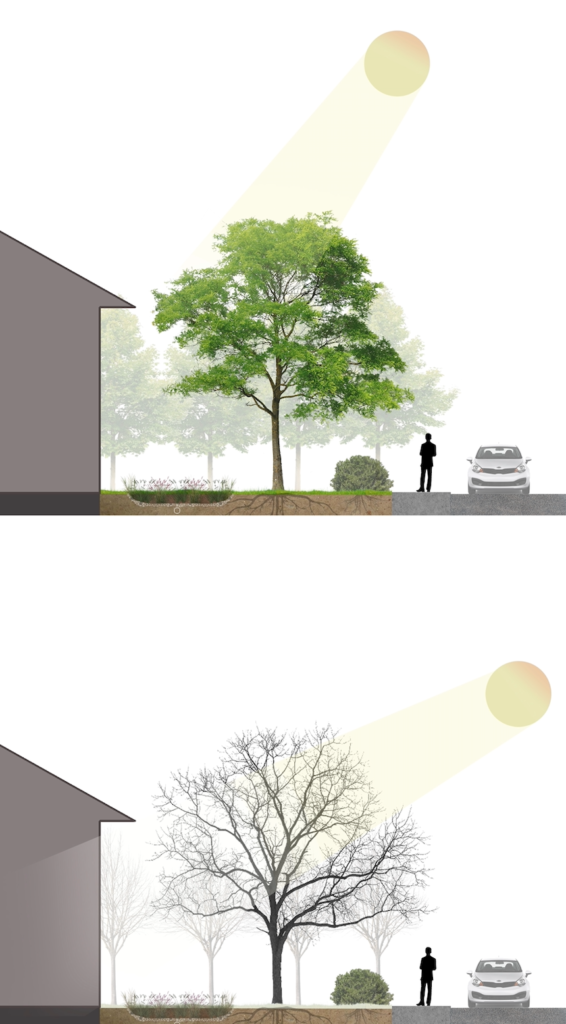
Ecological Landscaping
Landscaping, as Mother Nature intended.
An Ecological Approach
Nature offers a powerful escape — it soothes, sustains, and connects us. But as development spreads, our landscapes are being replaced by impervious surfaces, chemically treated lawns, and water-hungry, non-native ornamentals that degrade biodiversity and demand constant upkeep.
At Inhabitect, we design landscapes that work with nature, not against it. We take a holistic, sustainable approach that centers on long-term resilience — using native plants to manage stormwater, reduce erosion, and restore ecological function. Our designs create vibrant habitats that support pollinators, birds, and wildlife, helping you transform your property into a thriving, low-maintenance ecosystem.
By understanding how natural systems function and how living creatures interact with the land, we weave biodiversity, beauty, and purpose into every place you live, work, and play.
The Edge Effect
In nature, the richest biodiversity is often found where two ecosystems meet. The edge effect refers to the ecological changes that occur in these transitional zones — called ecotones — where two habitats blend and interact. These areas support more species by offering diverse resources, shelter, and microclimates, bringing movement and vitality to the landscape.
At Inhabitect, we design with the edge effect in mind — blending native plant communities and creating purposeful transitions between built and natural environments. We thoughtfully consider how wildlife and pollinators will interact with each space, designing for specific ecological functions like nesting, foraging, and safe movement. These edge zones are dynamic places where we activate nature, transforming the landscape into vibrant ecological hotspots where life converges, overlaps, and thrives.
Rain Garden
Rain gardens are a vital component of ecological landscaping, designed to manage stormwater runoff by capturing and filtering rainwater through native vegetation and engineered soil layers. Native plants play a crucial role—their deep roots, sometimes reaching over 10 feet, create pathways that improve infiltration, reduce surface runoff, and support groundwater recharge. Rain gardens not only reduce erosion and improve water quality but also enhance biodiversity by providing food and habitat for pollinators and other wildlife. Inhabitect designs each rain garden to work with the site’s natural contours, creating beautiful, functional landscapes that promote long-term environmental resilience.

Ecological Landscaping Benefits
Stormwater Management
We use plants, soils, and other landscaping components for reasons more than just to look nice in an outdoor space. As part of the stormwater treatment train, they’re critical in managing excess water and keeping erosion under control. By implementing ecological and mindful landscaping as a practice of Green Stormwater Infrastructure (GSI), the amount of rainwater runoff is greatly reduced and sometimes eliminated altogether.
Resilience to Climate Change
Soil Health & Regeneration
Healthy landscapes start with healthy soils. Our ecological approach supports soil regeneration by reducing chemical inputs and promoting deep-rooted native plants that improve structure, fertility, and microbial activity over time.
Human Health & Well-Being
Ecological landscapes don’t just support the environment — they support us. Access to biodiverse green spaces has been shown to reduce stress, improve mood, and encourage time outdoors, benefiting both mental and physical health.

Biodiversity
Better Air Quality
Reduced Maintenance & Long-Term Savings
Native and climate-adapted plantings require less water, fertilizer, and maintenance. Once established, they thrive with minimal intervention — lowering long-term maintenance needs and overall costs.
Habitat Connectivity
When designed with intention, ecological landscapes can act as stepping stones or corridors that connect fragmented habitats. This supports wildlife movement and migration, especially for pollinators and small mammals navigating urban or suburban areas.
Let’s Talk
When creating a landscape design, we have one common goal… To design, build, and grow inviting, natural landscapes that have a positive impact on their surrounding ecosystem. Click to schedule a time to talk with us about creating your own.
